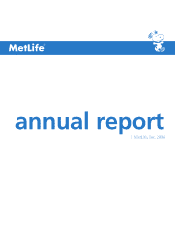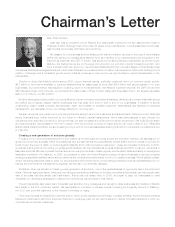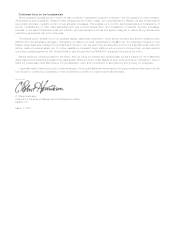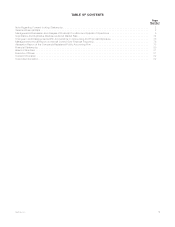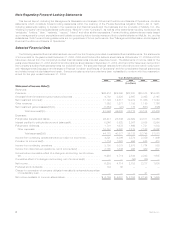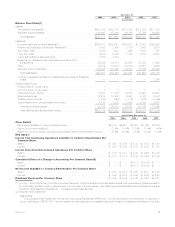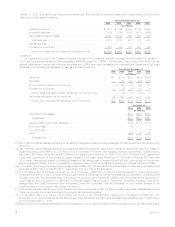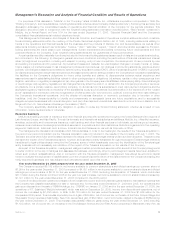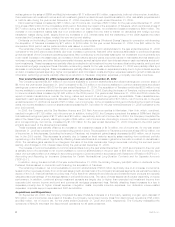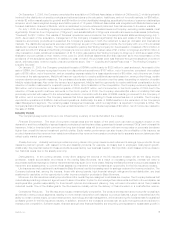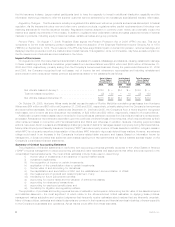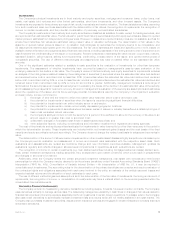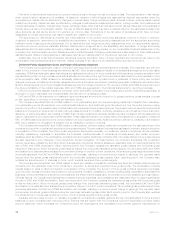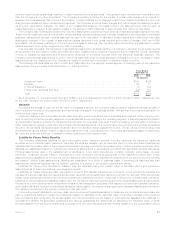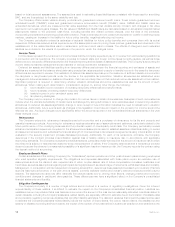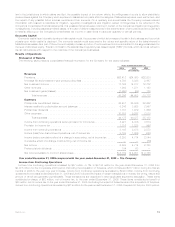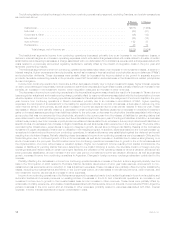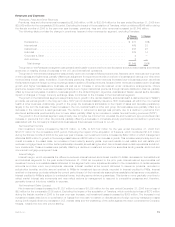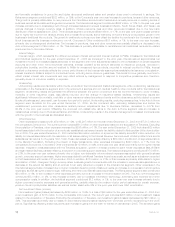MetLife 2006 Annual Report Download - page 11
Download and view the complete annual report
Please find page 11 of the 2006 MetLife annual report below. You can navigate through the pages in the report by either clicking on the pages listed below, or by using the keyword search tool below to find specific information within the annual report.
the life insurance industry. Larger market participants tend to have the capacity to invest in additional distribution capability and the
information technology needed to offer the superior customer service demanded by an increasingly sophisticated industry client base.
Regulatory Changes. The life insurance industry is regulated at the state level, with some products and services also subject to federal
regulation. As life insurers introduce new and often more complex products, regulators refine capital requirements and introduce new
reserving standards for the life insurance industry. Regulations recently adopted or currently under review can potentially impact the
reserve and capital requirements of the industry. In addition, regulators have undertaken market and sales practices reviews of several
markets or products, including equity-indexed annuities, variable annuities and group products.
Pension Plans. On August 17, 2006, President Bush signed the Pension Protection Act of 2006 (“PPA”) into law. This act is
considered to be the most sweeping pension legislation since the adoption of the Employee Retirement Income Security Act of 1974
(“ERISA”) on September 2, 1974. The provisions of the PPA may have a significant impact on demand for pension, retirement savings, and
lifestyle protection products in both the institutional and retail markets. This legislation, while not immediate, may have a positive impact on
the life insurance and financial services industries in the future.
Impact of Hurricanes
On August 29, 2005, Hurricane Katrina made landfall in the states of Louisiana, Mississippi and Alabama, causing catastrophic damage
to these coastal regions. MetLife’s cumulative gross losses from Hurricane Katrina were $333 million and $335 million at December 31,
2006 and 2005, respectively, primarily arising from the Company’s homeowners business. During the years ended December 31, 2006
and 2005, the Company recognized total net losses, net of income tax and reinsurance recoverables and including reinstatement
premiums and other reinsurance-related premium adjustments related to the catastrophe as follows:
2006 2005 2006 2005 2006 2005
Auto & Home
Years Ended
December 31,
Institutional
Years Ended
December 31,
Total Co mp any
Years Ended
December 31,
(In millions)
NetultimatelossesatJanuary1, ..................... $120 $ — $14 $— $134 $ —
Totalnetlossesrecognized......................... (2) 120 — 14 (2) 134
NetultimatelossesatDecember31,................... $118 $120 $14 $14 $132 $134
On October 24, 2005, Hurricane Wilma made landfall across the state of Florida. MetLife’s cumulative gross losses from Hurricane
Wilma were $64 million and $57 million at December 31, 2006 and 2005, respectively, primarily arising from the Company’s homeowners
and automobile businesses. During the years ended December 31, 2006 and 2005, the Company’s Auto & Home segment recognized
total losses, net of income tax and reinsurance recoverables, of $29 million and $32 million, respectively, related to Hurricane Wilma.
Additional hurricane-related losses may be recorded in future periods as claims are received from insureds and claims to reinsurers are
processed. Reinsurance recoveries are dependent upon the continued creditworthiness of the reinsurers, which may be affected by their
other reinsured losses in connection with Hurricanes Katrina and Wilma and otherwise. In addition, lawsuits, including purported class
actions, have been filed in Louisiana and Mississippi challenging denial of claims for damages caused to property during Hurricane Katrina.
Metropolitan Property and Casualty Insurance Company (“MPC”) is a named party in some of these lawsuits. In addition, rulings in cases in
which MPC is not a party may affect interpretation of its policies. MPC intends to vigorously defend these matters. However, any adverse
rulings could result in an increase in the Company’s hurricane-related claim exposure and losses. Based on information known by
management, it does not believe that additional claim losses resulting from Hurricane Katrina will have a material adverse impact on the
Company’s consolidated financial statements.
Summary of Critical Accounting Estimates
The preparation of financial statements in conformity with accounting principles generally accepted in the United States of America
(“GAAP”) requires management to adopt accounting policies and make estimates and assumptions that affect amounts reported in the
consolidated financial statements. The most critical estimates include those used in determining:
i) the fair value of investments in the absence of quoted market values;
ii) investment impairments;
iii) the recognition of income on certain investments;
iv) application of the consolidation rules to certain investments;
v) the fair value of and accounting for derivatives;
vi) the capitalization and amortization of DAC and the establishment and amortization of VOBA;
vii) the measurement of goodwill and related impairment, if any;
viii) the liability for future policyholder benefits;
ix) accounting for income taxes and the valuation of deferred tax assets;
x) accounting for reinsurance transactions;
xi) accounting for employee benefit plans; and
xii) the liability for litigation and regulatory matters.
The application of purchase accounting requires the use of estimation techniques in determining the fair value of the assets acquired
and liabilities assumed — the most significant of which relate to the aforementioned critical estimates. In applying these policies,
management makes subjective and complex judgments that frequently require estimates about matters that are inherently uncertain.
Many of these policies, estimates and related judgments are common in the insurance and financial services industries; others are specific
to the Company’s businesses and operations. Actual results could differ from these estimates.
8MetLife, Inc.

